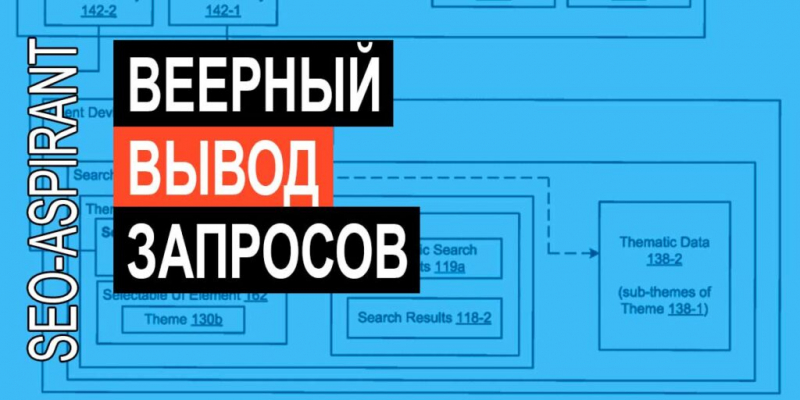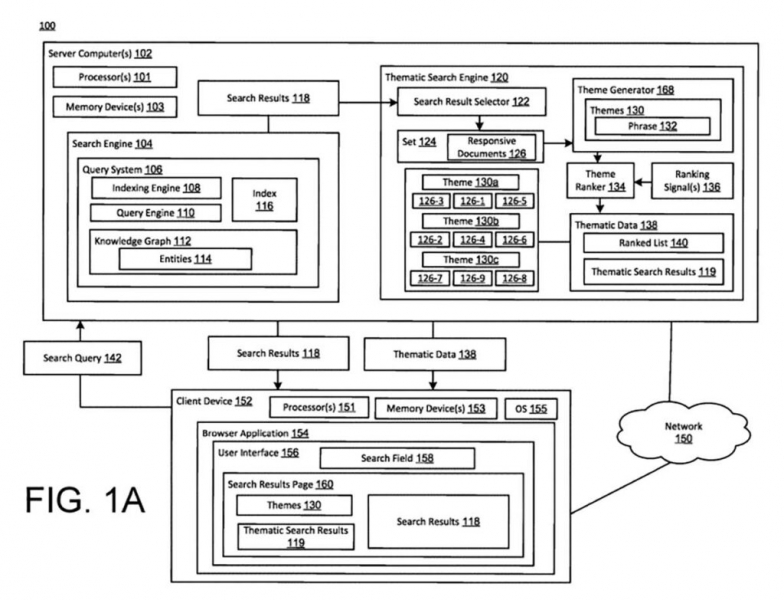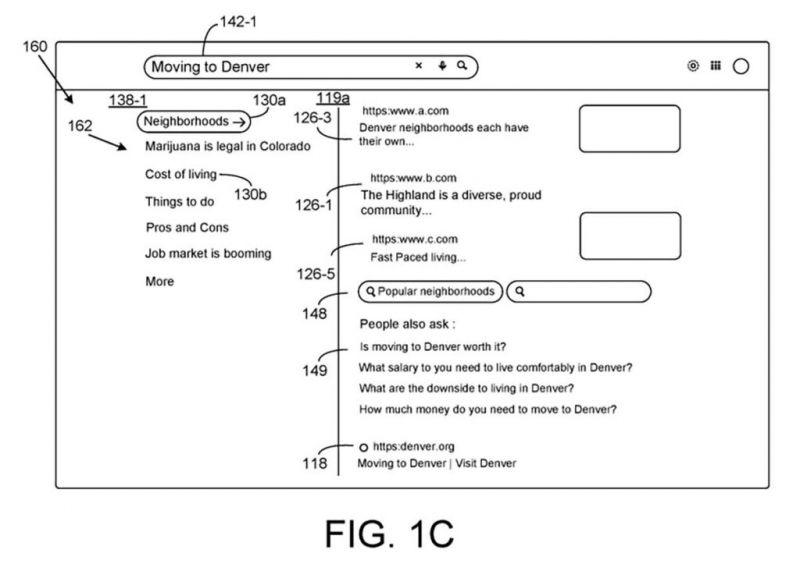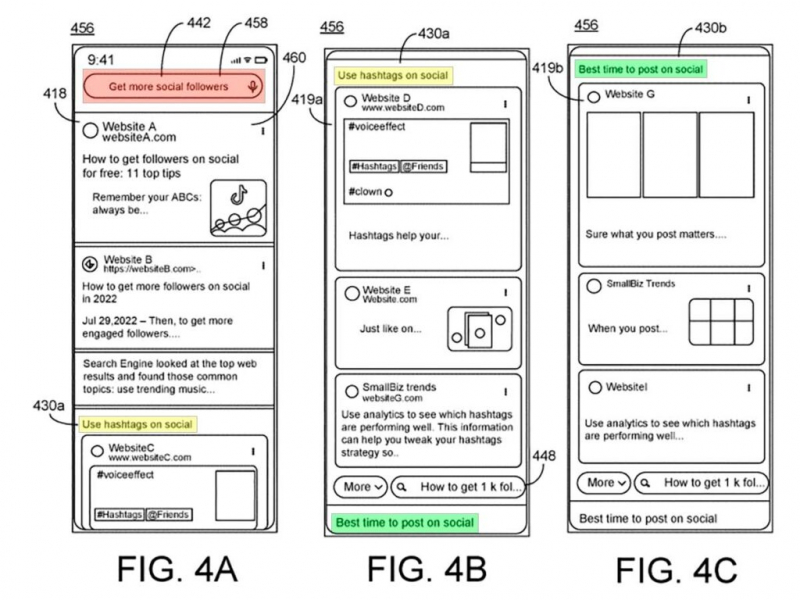Google’s patent for thematic search strongly echoes Query Fan-Out AI Mode, a system for researching deep, broad and complex queries.
The patent, filed by Google in December 2024, is a close analogue of the “fan queries” technique used by Google’s artificial intelligence mode.
The patent, called “Thematic Search,” provides insight into how AI-Mode responses are generated and offers new ways to think through a content strategy.
Disclaimer: Virtually all patents filed by Google list numerous ways to implement them within the algorithm, which is the case in this patent. As a rule, Google does not confirm that inventions in a patent or scientific work are already in use, as is the case with this patent.

Recommendation of the month: OKX June Bonuses are a summer promotion for novice crypto traders from the OKX exchange. Register, trade for an amount starting from 150 USDT and receive a secret prize worth up to $100 in BTC. Trade more and get rewards up to $60,000!
- What the patent describes
- Thematic search engine
- Comparison of fan and thematic search
- Summary generator
- Query results are grouped by topic instead of the traditional ranking
- Combining content from multiple sources
- Links to the content of the source pages
- User interaction affects the presentation
- When compiling a resume, site metadata is used
- Thematic search: implications for content and SEO
What the patent describes
The patent describes a thematic search system that organizes search results related to a search query into categories called topics and provides a brief summary of each topic so that users can understand the answers to their questions without having to click on links to various websites.
The patent describes a system for in-depth research on broad or complex issues. The novelty of the invention lies in the fact that it automatically identifies topics from traditional search results and, using artificial intelligence, generates an informative summary for each of them, using both the content and context of these results.
Thematic Search Engine
Thematic search engines is a concept that dates back to the early days of search engines, so this patent caught my attention a few months ago and made me bookmark it.
Short description:
- The patent refers to the use of a large language model and a summary generator in the context.
- It also mentions a thematic search engine that receives a search query and then passes it to the search engine.
- A thematic search engine receives search results and organizes them into topics.
- The patent describes a system that interacts with a traditional search engine and uses a large language model to create summaries of thematically grouped search results.
- The patent describes that a single query can lead to multiple queries based on “subtopics.”
Comparison of fan and thematic search
The system described in the patent repeats what Google’s documentation says about the Query Fan-Out technique.
Here’s what the patent says about generating additional queries based on subtopics:
“In some examples, in response to the generated search query 142-2, the thematic search engine 120 may generate thematic data 138-2 from at least part of the search results 118-2. For example, the thematic search engine 120 can receive search results 118-2 and can generate narrower topics 130 (for example, subtopics) (for example, “district A”, “district B”, “district C”) from the corresponding search result documents 126 118-2. The search results page 160 may display subtopics of topic 130a and/or thematic search results 119 for search query 142-2. The process may continue, where the selection of a sub-topic of topic 130a may cause the thematic search engine 120 to receive a different set of search results 118 from the search engine 104 and may generate narrower topics 130 (for example, sub-topics of topic 130a) from the search results 118 and so on.”

Here’s what Google’s documentation says about query branching techniques:
“It uses the technique of “fan queries”, when several related search queries are simultaneously issued by subtopics and multiple data sources, and then these results are combined to provide a simple and understandable answer. This approach allows for broader and deeper access to information than traditional Google search.”
The system described in the patent resembles what Google’s documentation says about the Query Fan-Out technique, especially in how it explores subtopics by generating new queries based on topics.
Summary Generator (summary)
The resume generator is a component of the thematic search system. It is designed to create text summaries (generalizations) on each topic obtained as a result of the search.
This is how it works:
- The resume generator is sometimes implemented as a large language model trained to create original text.
- The resume generator uses one or more excerpts from search results grouped by a specific topic.
- It can also use contextual information from headings, metadata, and related excerpts to enhance the quality of a resume.
- The resume generator can be started when the user sends a search query or initializes a thematic search engine.
The patent does not define what “initialization” of a thematic search engine means, perhaps because it is taken for granted that this means launching a thematic search engine while waiting for a query to be processed.
Query results are grouped by topic instead of the traditional ranking
The traditional search results in some of the examples presented in the patent are being replaced by grouped topics and generated summaries.
Thematic search changes what content is shown and what users are sent to. For example, a typical query that a website is optimized for can now become the starting point in a user’s information journey.
The results of a thematic search lead the user along the path of discovering the subtopics of the original query, and the site that ultimately wins the click may not be the one that ranks first in the original search query, but rather it may be another web page relevant to a related query.
The patent describes several ways the thematic search engine works:
- “The topics are displayed on the search results page, and in some examples, the search results (or part of them) are ordered(for example, organized, sorted) according to a variety of topics. The topic display may include the display of the topic phrase.
- In some examples, a topic search engine may rank topics based on relevance and/or relevance to a search query.
- On the search results page, the search results (or part of them) can be organized according to topics (for example, the topic “cost of living” defines those search results that relate to the topic “cost of living”).
- Topics and/or search results organized by topic by a thematic search engine can be displayed on the search results page in various ways, for example, in the form of lists, cards, or user interface (UI) objects, horizontal carousel, vertical carousel, etc.
- Search results organized by topic can be called thematic search results. In some examples, topics and/or search results organized by topic are displayed on the search results page along with search results (for example, regular search results) from the search engine.
- In some examples, topics and/or search results organized by topic are displayed in a part of the search results page that is separate from the search results received by the search engine.”
Combining content from multiple sources
Reports generated by artificial intelligence are created on the basis of several websites and grouped according to a single topic. This makes it difficult to predict the distribution of links, visibility, and traffic.
In the following quotation from the patent, the reference to “unstructured data” refers to the content on the web page.
According to the patent:
“For example, a thematic search engine can generate topics from unstructured data, analyzing the content of the responding documents themselves, and thematically organizing search results according to the topics.
…. In response to a search query (“moving to Denver”), the search engine can receive search results (for example, matching documents) that match that search query.
A thematic search engine can select a set of relevant documents (for example, the top X number of search results) from the search results obtained by the search engine and generate a variety of topics (for example, “neighborhoods”, “cost of living”, “things to do”, “pros and cons”, etc.) from the content of the relevant documents.
The topic may include a phrase generated by the language model that describes the topic included in the responding documents. In some examples, a thematic search engine can match semantic keywords from each responding document (for example, from search results) and combine semantic keywords with similar semantic keywords from other responding documents to create themes.”

Links to the content of the source pages
The documentation says that the thematic search system links to the URLs of the source pages. It also says that the result of a thematic search may include the title of a web page or other metadata. But for SEO specialists and website owners, the part that concerns attribution and links is especially important.
“The thematic search result 119 may include the title 146 of the responding document 126, excerpt 145 from the responding document 126 and the source 144 responding documents. The source 144 may be a resource locator (for example, a unified resource location (URL)) The corresponding document is 126.
Passage 145 may be a description (for example, a fragment derived from metadata or the contents of a responding document 126). In some examples, passage 145 includes a portion of the responding document 126 that mentions the relevant topic 130. In some examples, passage 145 included in the search result 119 is linked to a short description 166 generated by the language model 128 and included in cluster group 172.”
User interaction affects the presentation
As already mentioned, a thematic search engine is not a ranked list of documents for a search query. This is a collection of information on topics related to the initial search query. User interaction with these resumes generated by artificial intelligence affects which sites receive traffic.
Automatically generated subtopics can represent alternative directions on the user’s path to information, which begins with the initial search query.

The metadata of the website is used when compiling the resume
The resume generator uses document headers, metadata, and surrounding text content. This may mean that well-structured content can influence how resumes are constructed.
The following is what the patent says about this:
- “The summary generator 164 can take passage 145 as an input signal and output a short description 166 for the entered passage 145.
- In some examples, the summary generator 164 receives passage 145 and contextual information as input and outputs a short description 166 for passage 145.
- In some examples, the contextual information may include the title of the responding document 126 and/or metadata associated with the responding document 126.
- In some examples, the contextual information may include one or more adjacent passages 145 (e.g., adjacent passages).
- In some examples, the contextual information may include a brief description 166 for one or more adjacent passages 145 (for example, adjacent passages).
- In some examples, the contextual information may include all other passages 145 in the same responding document 126. For example, the summary generator may take passage 145 and other passages 145 (for example, all other passages 145) in the same responding document 126 (and, in some examples, other contextual information) as input It can output a short description 166 for passage 145. “
Thematic search: implications for content and SEO
AI Mode can have two scenarios for the site owner:
- Since users can receive responses from thematic summaries or drop-down windows, the percentage of results with zero clicks is likely to increase, which will lead to a decrease in traffic from traditional links.
- Or it may happen that the web page where the user’s information journey ends for this query will receive a click.
I think this means that we will need to rethink the keyword ranking paradigm and consider the question that the webpage answers, and then identify subsequent questions that may be related to the initial query and either include them in the webpage or create another webpage that answers that which may be the end of the information journey for this search query.
Information sources:
- Google’s patent for thematic search (PDF).
- Google documentation on Artificial Intelligence Mode (AI Mode) (PDF).
